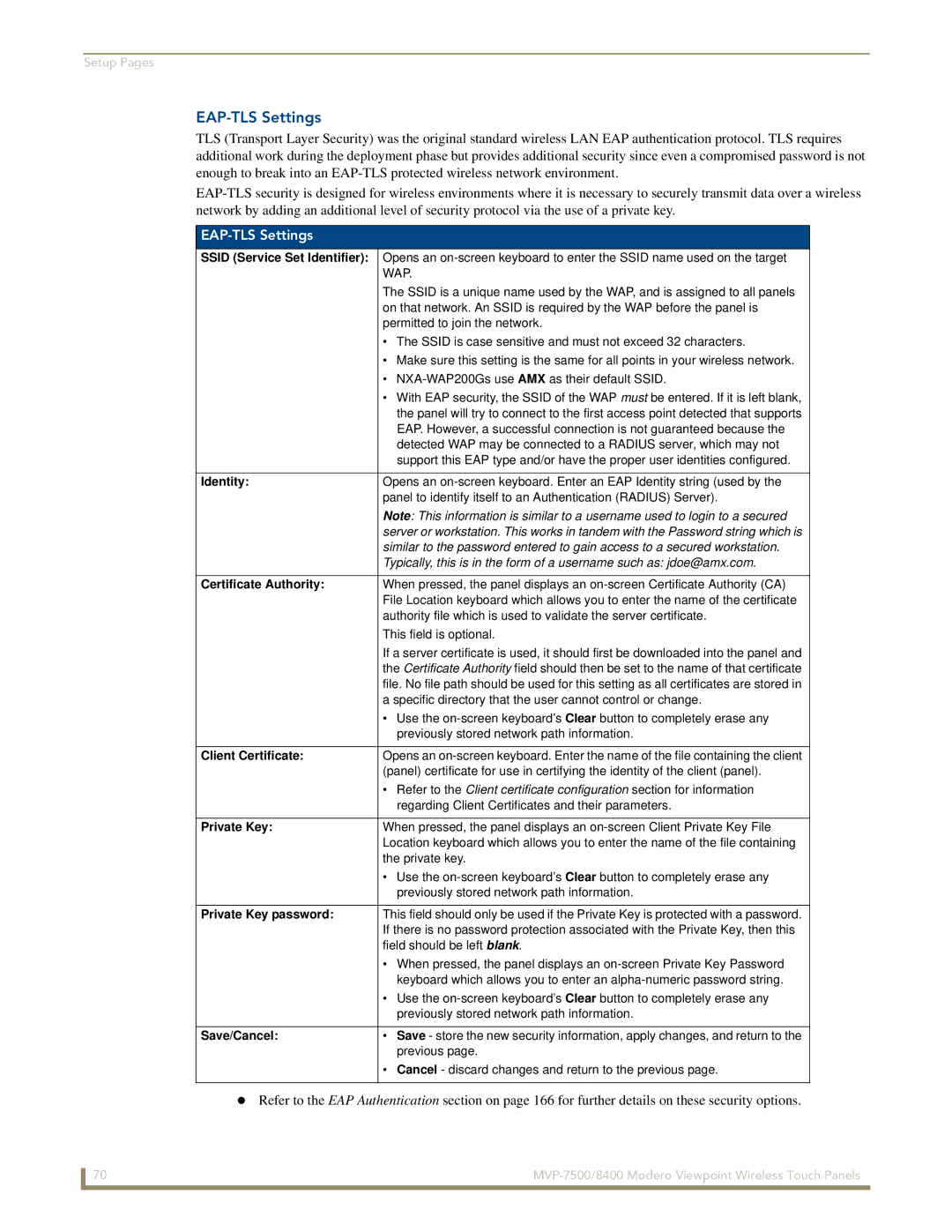
Setup Pages
EAP-TLS Settings
TLS (Transport Layer Security) was the original standard wireless LAN EAP authentication protocol. TLS requires additional work during the deployment phase but provides additional security since even a compromised password is not enough to break into an
EAP-TLS Settings
SSID (Service Set Identifier): | Opens an |
| WAP. |
| The SSID is a unique name used by the WAP, and is assigned to all panels |
| on that network. An SSID is required by the WAP before the panel is |
| permitted to join the network. |
| • The SSID is case sensitive and must not exceed 32 characters. |
| • Make sure this setting is the same for all points in your wireless network. |
| • |
| • With EAP security, the SSID of the WAP must be entered. If it is left blank, |
| the panel will try to connect to the first access point detected that supports |
| EAP. However, a successful connection is not guaranteed because the |
| detected WAP may be connected to a RADIUS server, which may not |
| support this EAP type and/or have the proper user identities configured. |
|
|
Identity: | Opens an |
| panel to identify itself to an Authentication (RADIUS) Server). |
| Note: This information is similar to a username used to login to a secured |
| server or workstation. This works in tandem with the Password string which is |
| similar to the password entered to gain access to a secured workstation. |
| Typically, this is in the form of a username such as: jdoe@amx.com. |
|
|
Certificate Authority: | When pressed, the panel displays an |
| File Location keyboard which allows you to enter the name of the certificate |
| authority file which is used to validate the server certificate. |
| This field is optional. |
| If a server certificate is used, it should first be downloaded into the panel and |
| the Certificate Authority field should then be set to the name of that certificate |
| file. No file path should be used for this setting as all certificates are stored in |
| a specific directory that the user cannot control or change. |
| • Use the |
| previously stored network path information. |
|
|
Client Certificate: | Opens an |
| (panel) certificate for use in certifying the identity of the client (panel). |
| • Refer to the Client certificate configuration section for information |
| regarding Client Certificates and their parameters. |
|
|
Private Key: | When pressed, the panel displays an |
| Location keyboard which allows you to enter the name of the file containing |
| the private key. |
| • Use the |
| previously stored network path information. |
|
|
Private Key password: | This field should only be used if the Private Key is protected with a password. |
| If there is no password protection associated with the Private Key, then this |
| field should be left blank. |
| • When pressed, the panel displays an |
| keyboard which allows you to enter an |
| • Use the |
| previously stored network path information. |
|
|
Save/Cancel: | • Save - store the new security information, apply changes, and return to the |
| previous page. |
| • Cancel - discard changes and return to the previous page. |
|
|
Refer to the EAP Authentication section on page 166 for further details on these security options.
70 |
